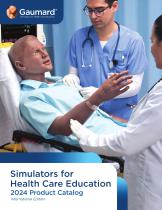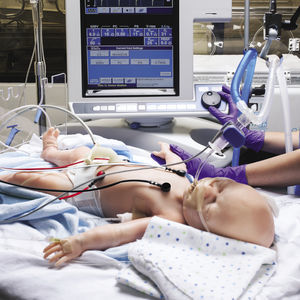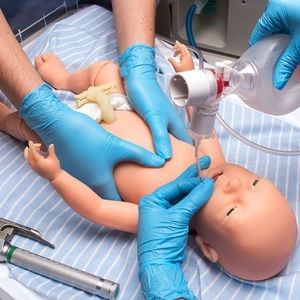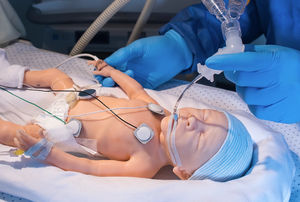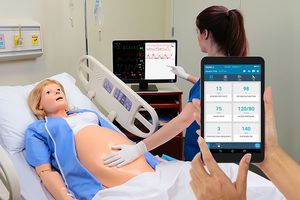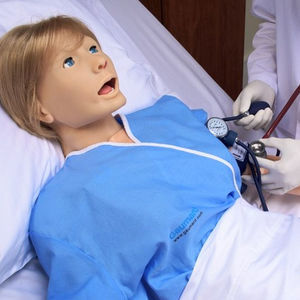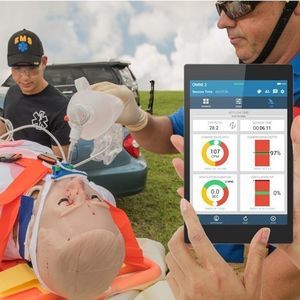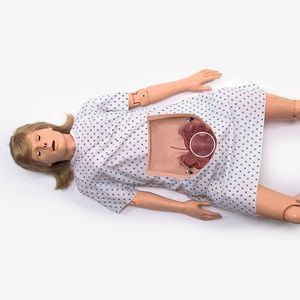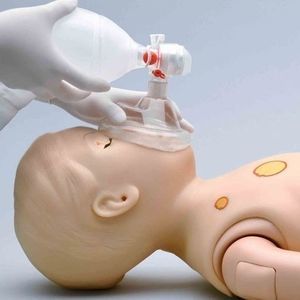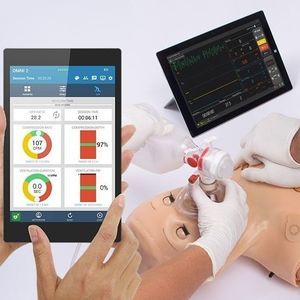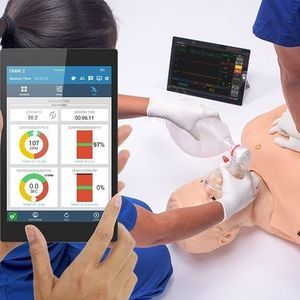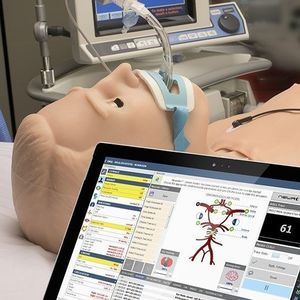
Nursing care patient simulator HAL® S3000auscultationpalpationintubation

Add to favorites
Compare this product
fo_shop_gate_exact_title
Characteristics
- Procedure
- ECG, intubation, tracheostomy, cricothyrotomy, infusion, auscultation, monitoring, palpation, for resuscitation, CPR, for cardiopulmonary resuscitation
- Application
- for intensive care, nursing care, prehospital care
- Type
- adult, male
- Form
- whole body
- Configuration
- manikin set
- Technology
- computerized
- Options
- with vital sign monitor
Description
HAL's advanced design and tetherless technology eliminate external tubes, wires, and compressors. HAL operates continuously during transport so that training can occur in the working environment. Rush HAL from the accident scene to the ER or the ICU while care providers diagnose and treat his condition using real monitoring and resuscitation equipment. HAL® smoothly transitions between physiologic states in response to commands from a wireless PC.
HAL® S3000 | A Proven Tetherless Patient Simulator
HAL® is easy to use and fully functional during transport with wireless control and documentation. His electrically conductive skin regions allow the use of real equipment to obtain his ECG, perform temporary pacing, cardiovert, and defibrillate.
• - Blood pressure can be taken using a BP cuff, palpation, or auscultation methods.
• - Train advanced airway management via intubation with ETTs or SGAs, tracheostomy, or needle cricothyrotomy.
• - Bilateral carotid, radial, brachial, femoral, popliteal, and pedal pulses. Pulse strengths vary with BP and pulses are synchronized with the ECG.
• - Bilateral IV training arms; train bolus and/or IV infusion.
• - Attach real electrodes and monitor HAL’s lifelike rhythm in real time; easily change rhythms with one click.
• - Here, pacing therapy converts HAL’s profound bradycardia into a paced ventricular rhythm. HAL® can be paced anteriorly at the defibrillation sites.
Learn more: https://www.gaumard.com/products/s3000
To find a Gaumard authorized distributor, visit https://www.gaumard.com/find-sales-manager?option=internationa
VIDEO
Catalogs
Related Searches
- Gaumard training simulator
- Gaumard general care simulator
- Control software
- Windows medical software
- Training manikin
- Upper body simulator
- Surgical simulator
- Scan software
- Gaumard patient simulator
- Education software
- Portable simulation trainer
- General care training manikin
- Lower body simulator
- Vital sign simulator
- Simulation software
- Emergency care simulation unit
- Woman simulator
- Catheterization simulator
- Palpation simulator
- Teaching simulator
*Prices are pre-tax. They exclude delivery charges and customs duties and do not include additional charges for installation or activation options. Prices are indicative only and may vary by country, with changes to the cost of raw materials and exchange rates.



